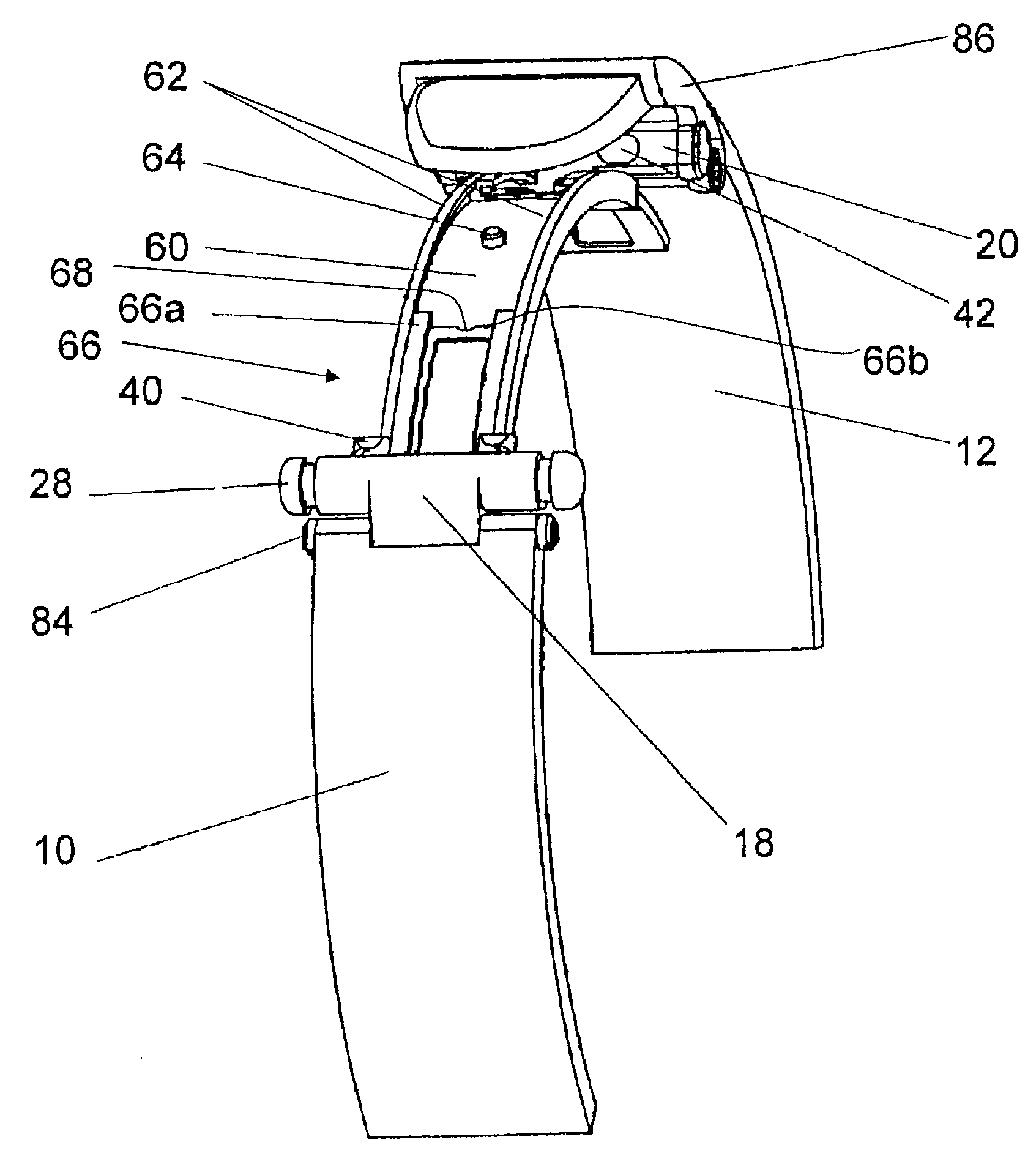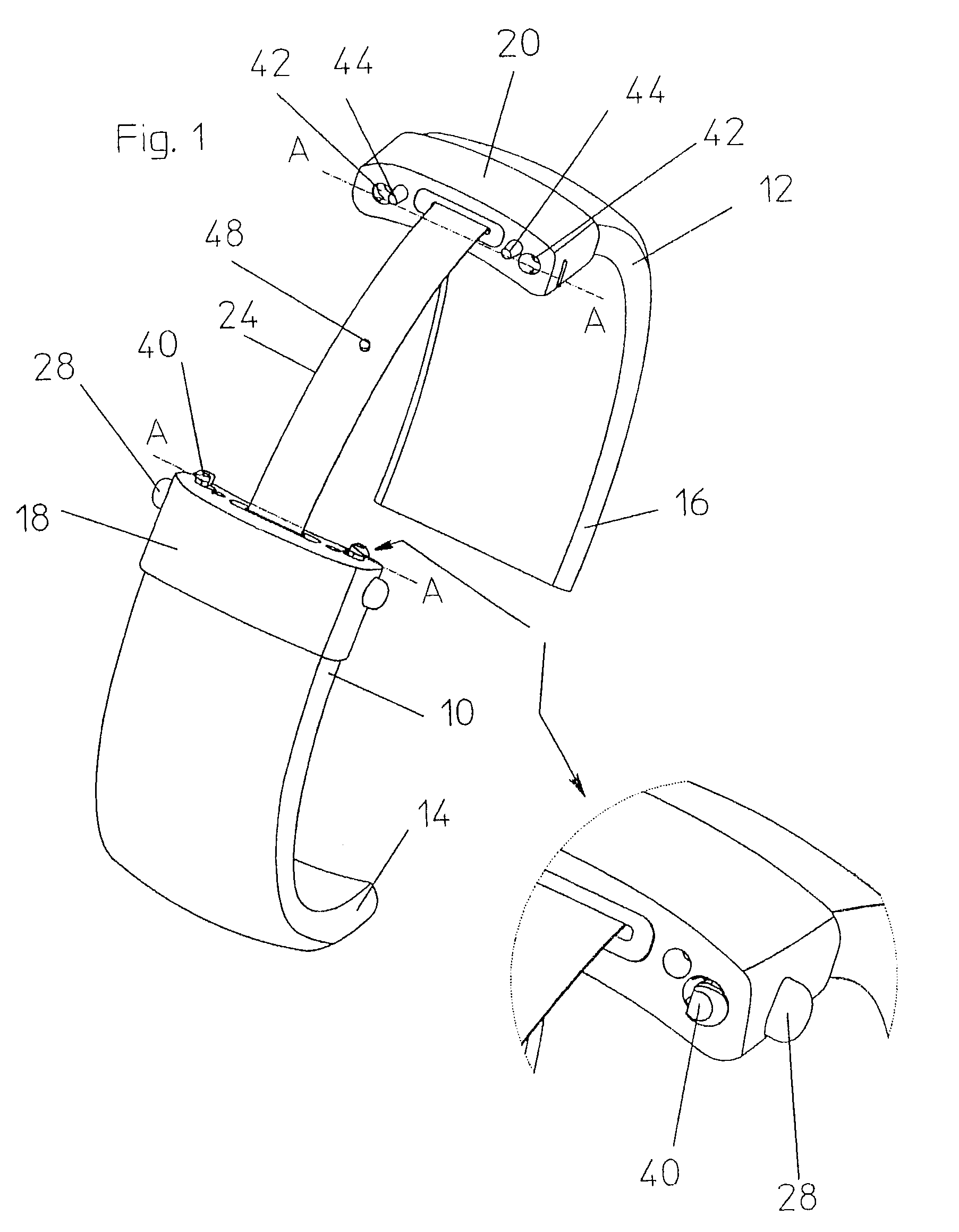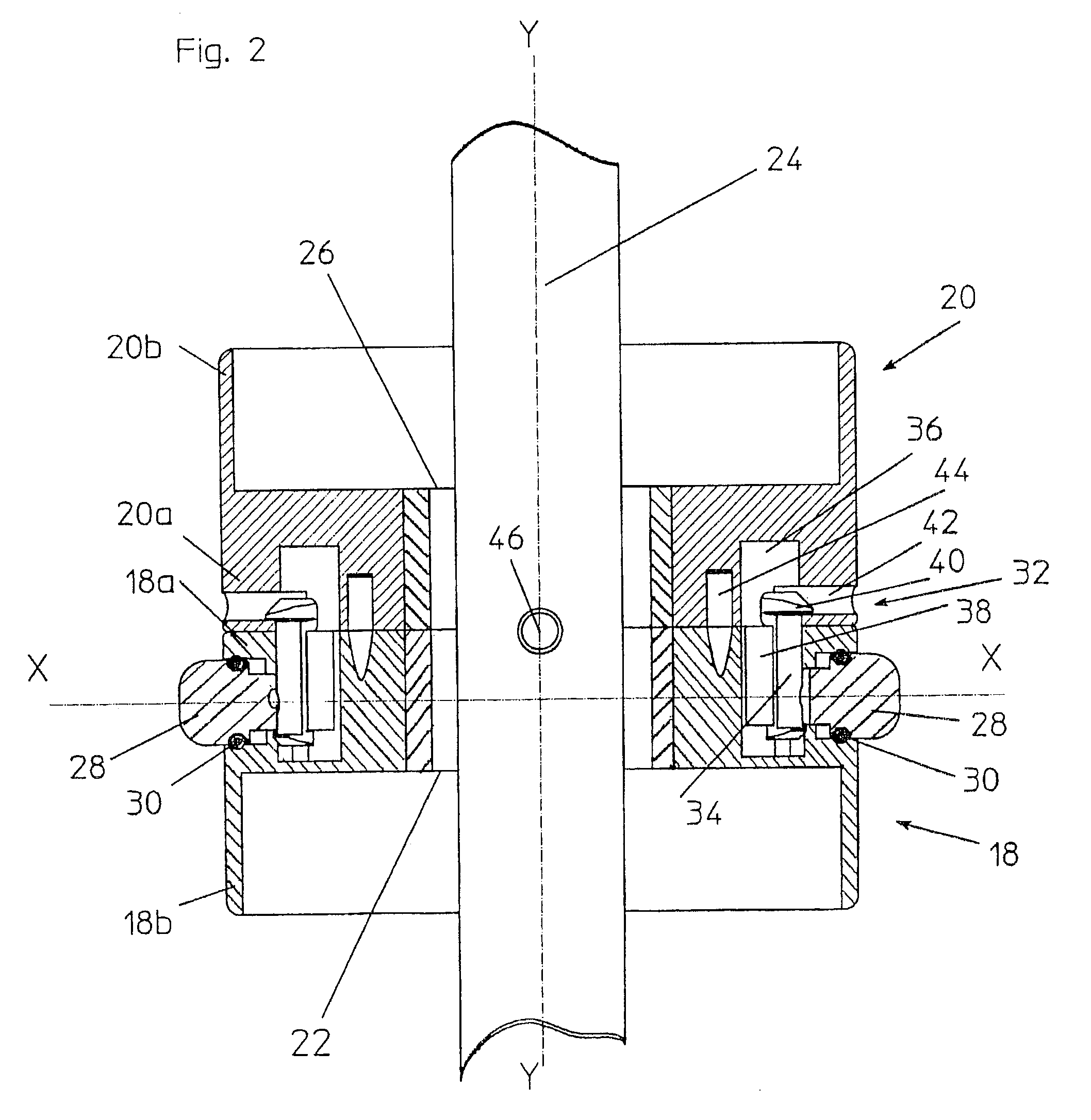Bracelet clasp comprising a sliding catch
a clasp and sliding technology, applied in the field of clasps with sliding catch, can solve the problems of not having the abovementioned disadvantage of devices, not ensuring the joining of two strands, and difficult to envisag
- Summary
- Abstract
- Description
- Claims
- Application Information
AI Technical Summary
Benefits of technology
Problems solved by technology
Method used
Image
Examples
Embodiment Construction
[0025]A bracelet having a clasp comprising a sliding catch according to the invention, in the open position, is represented in FIG. 1 showing only that it comprises two strands 10 and 12. It is understood that, for a watch application, it effectively involves two separate strands whose respective ends 14 and 16 are suitable for being connected to a watch case by any method known to those skilled in the art. On the other hand, for a jewelry application, the bracelet may comprise either a single strand, or two strands joined by a central articulation. The bracelet represented has links, but it may be monobloc, particularly made of synthetic material.
[0026]The invention relates essentially to the clasp that makes it possible to couple the ends of the bracelet opposite to the ends 14 and 16.
[0027]FIGS. 1 and 2 show that the two strands 10 and 12 are attached, by their respective ends, to two elements 18 and 20 that form the actual clasp of the bracelet and have the same outer, generally...
PUM
 Login to View More
Login to View More Abstract
Description
Claims
Application Information
 Login to View More
Login to View More - R&D
- Intellectual Property
- Life Sciences
- Materials
- Tech Scout
- Unparalleled Data Quality
- Higher Quality Content
- 60% Fewer Hallucinations
Browse by: Latest US Patents, China's latest patents, Technical Efficacy Thesaurus, Application Domain, Technology Topic, Popular Technical Reports.
© 2025 PatSnap. All rights reserved.Legal|Privacy policy|Modern Slavery Act Transparency Statement|Sitemap|About US| Contact US: help@patsnap.com



